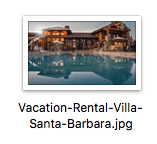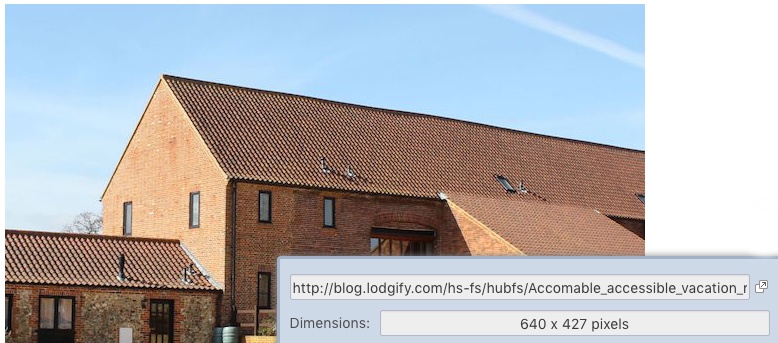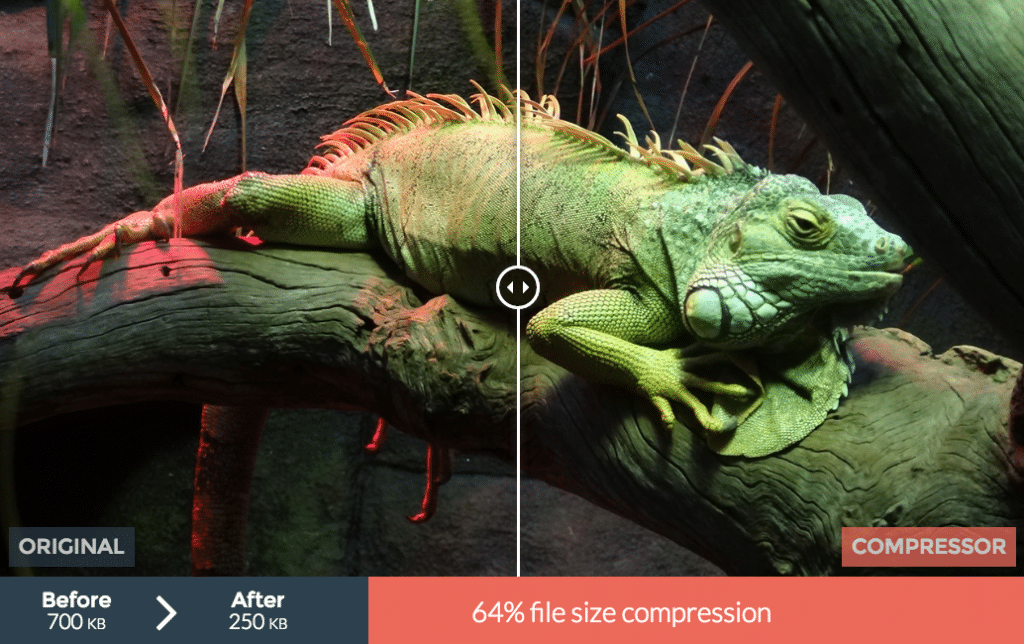Knowing how to optimize images can have a huge impact on your vacation rental website SEO. Just as search engines crawl text in order to know what will be helpful to searchers, they also scan the text that is associated with your images.
While your guests might not care about the text that comes along with an image, it may be a factor in attracting them to your website. Once visitors are on your site, they will definitely notice if something is causing your pages to load slowly.
Search engines like Google even analyze the load time of your pages as one of the factors which determine the ranking for your website. That’s why keeping control over the size of any photos on your website is so important.
What does “optimize images for SEO” actually mean?

Marketing your rental property online can be a lot of fun, but also frustrating. High-quality vacation rental photos are a must to show off your property in its best light. But these generally come at a price – in other words, the file sizes are huge. Heavy photos can consequently cause your website to lag and drive visitors away.
According to HTTP Archive, images make up around 60% of all data on websites. Because of this, it’s necessary for your property photos to load quickly so your website visitor can see, as soon as possible, if your alternative accommodation is suitable for them.
That said, reducing image size can often decrease quality, too. But what else can you do to make sure you fully optimize all the images on your vacation rental website? Prepare yourself for a deep dive into five essential image optimization tips.
How to optimize images for SEO without compromising quality
1. Name your images and use keywords
Before uploading any photos, there is something you need to do on your computer. Give all images file names that accurately depict the photo content and use your keywords where possible. This is because search engines and SEO function using text and file names. While Google won’t rank the images you post, it will rank the file names that come along with them.
For this reason, always ensure that you are labeling every image you upload onto your website, rather than simply using the default file name.
For example: If the file has the default name ‘DSC0001’, the photo means nothing to search engines. It will be unsearchable in the millions of photos on the internet, and won’t do anything to enhance the SEO of your website.

However, if you name that same file ‘vacation-rental-villa-santa-barbara’, it suddenly becomes findable under any one of those keywords. A user looking for “Vacation Rental Villas in Santa Barbara” will potentially find your website thanks to the way you have optimized your image file name.
2. Add alt tags
When a browser can’t properly display an image, it will show the ‘alternative text’, otherwise known as an ‘alt tag’. In most browsers, you can see the alt tag of an image by hovering over that image with your mouse.
The coding will read something like this:

Alt tags are even more important than the file names of your images when it comes to SEO optimization. Search engines will scan every page for text, and the alt tag is the text that they will find in the place of an image on your page.
Use brief keywords that relevantly describe the image in question, so that your website (and its pictures) can show up in the correct results.
Never use keywords that aren’t relevant to your specific images or the search engine will eventually find out you’ve been trying to cheat the system to gain better SEO.
3. Reduce image dimensions
As a general rule of thumb, you should never post photos on your vacation rental website in their largest dimension.
Large photos cause lengthy loading times and some guests will be too impatient to wait around for an image to load before checking out the next option on their list.
Research from Kissmetrics found that 40% of people abandon a website which takes more than 3 seconds to load. In addition, a one-second delay in page response can result in a 7% reduction in conversions. Quick loading times are vital to engage potential guests on your website. What’s more, Google analyzes site load time as part of their ranking algorithm – making it infuential for your SEO.

While it’s great to allow visitors a closer view of the properties they could possibly rent, you also want to make sure they get to see the image immediately first and avoid page abandonment. Provided your website homepage loads quickly, you can give guests the option to zoom in on the photos on a different page, such as the gallery.
This will prevent the whole page from freezing up and frustrating any future guests, while simultaneously allowing them the possibility to see your pictures in more detail if necessary.
Find out which are the optimal dimensions for your website provider and make sure you size all photos to that uniform scale.
4. Compress file sizes
Even if the original dimensions of your images are small, if you haven’t downsized the actual file size of the image, your page may still load very slowly. In order to optimize this aspect of your images for SEO, you’ll need to decrease the file size your pictures before uploading them to your website. Aim to keep your file size below 100KB whenever possible.
You don’t need to have advanced photo editing skills to do this – there are many tools available to help. “These types of tools remove hidden data in the image file like additional color profiles and metadata (like geolocation of where the photograph was taken) that aren’t needed. These tools provide a quick and easy way to reduce files size without losing any image quality,” said A Better Lemonade Stand.
A few free online image compression apps are:

As well as this, you can also use a photo editing tool such as Photoshop to compress file size.
5. Use the right file type
In order to have truly optimized images, you also need to make sure you’re using the best file type for the job.

In general, experts recommend using either JPEG or PNG image files. JPEGs are the most standard, basic image file type. They make it easy to provide a quality image and small file size and so have become very popular. You will likely use JPEGs when showcasing photos of your vacation rental properties and rooms.
If you are publishing your company logo or even a graphic displaying a local map, a PNG file is probably the better option. PNGs provide lossless compression, meaning that they retain beautiful high quality, even when compressed to reduce the file size.
A GIF file is, in most cases, an animated image. It’s unlikely that vacation rental owners will need to use GIFs on their websites.
Optimizing images for SEO is easy
A lot of search engine optimization simply requires common sense and a few key steps to follow.
Properly naming your files, sticking with uniform image dimensions and keeping your photos at a decent file size are all essential when it comes to your vacation rental website SEO. It’s an easy way to guarantee a better ranking for your website and all it takes is a slight change in your image uploading habits!


